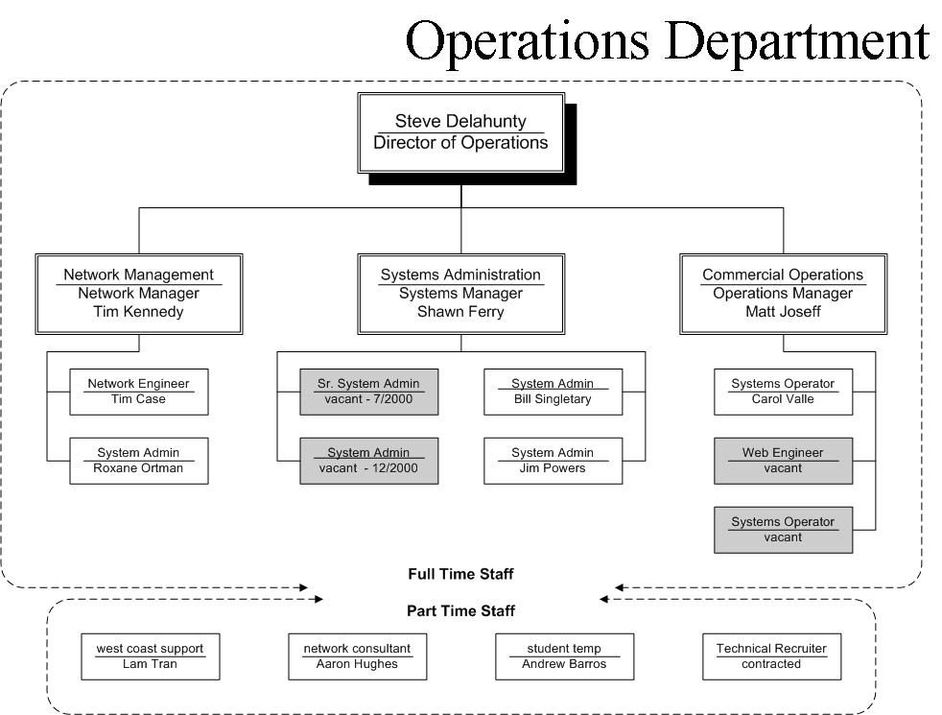
The operations department is an integral part of many organizations, focusing on maintaining the efficiency of the production process and helping teams make smart decisions. The organizational structure of an operations department can vary depending on the organization’s size, industry, and specific needs. Here are some common aspects of an operations department’s organizational structure:
1. Operational Planning: This function involves monitoring daily production, managing inventory, and ensuring team member performance and well-being.
2. Finance: Operations management includes creating budgets to meet production goals and ensuring that company leaders consider the budget when making important decisions.
3. Product Design: This function involves designing and developing new products or improving existing ones.
4. Quality Control: Operations management ensures that products or services meet quality standards and customer expectations.
5. Forecasting: This function involves predicting future demand for products or services to inform production planning.
6. Strategy: Operations management contributes to the development and implementation of strategies to improve operational efficiency.
7. Supply Chain Management: This function involves managing the flow of goods and services from suppliers to customers.
The hierarchy within an operations department can vary depending on the organization. It may consist of first-level managers, mid-level managers, and upper-level managers. Each level has different responsibilities and areas of authority.
Please note that the organizational structure of an operations department can be influenced by various factors, and organizations may have unique structures based on their specific needs and goals.
Let me know if there’s anything else I can help you with!
